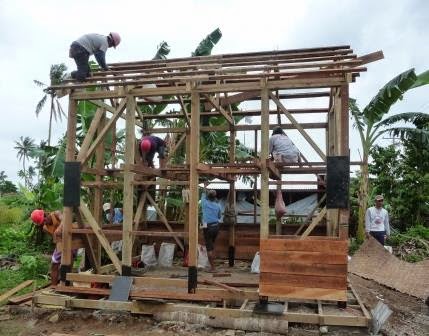It's 4.00 a.m. in the morning and despite how tired I feel I am wide awake. Jet lag. The seven hour time difference between the Philippines and the UK means my body thinks it's 11.00 a.m. and way past the time for sleeping. Last night I fought the tiredness I felt in the evening and stayed up until after 10.00 p.m. in an effort to get back into a normal sleep pattern again. Clearly it's not working yet...
Jet lag is not the only thing I'm wrestling with as I adjust to being home after three months away. I always liken that first 48 hours or so of 're-entry' to an out-of body experience (not that I've ever had one of those!). My body is in the UK but a large part of my heart and head is still full of where I've been. I have to adjust all over again to things that are so familiar because they haven't been part of my world in the last few months. My world has been very different.
So I'm getting used to:
- Sleeping without ear plugs. The world outside my window in rural Cumbria is a quiet one compared to the life lived on the streets of Leyte. There are no motorbikes roaring up and down the street. There are no dogs barking. There is no karaoke bar. No one is sweeping the street, chatting loudly to their neighbour as the new day dawns.
- Drinking tea without ants. The ubiquitous tiny brown ants that have a surprisingly sharp nip are no longer floating to the surface of my morning cup of tea.
- Taking a shower under hot running water. No more lukewarm (but not quite warm enough) bucket showers for me for a while.
- Drinking cold running water from the tap. Filtered water is the norm whenever I am overseas and despite the luxury of now having drinking water literally 'on tap' I am still dehydrated. In a hot climate drinking water all day long becomes the norm but when the temperature is cooler the immediate thirst is not there. My body can't seem to adjust that quickly to this lack of water and the combination of tiredness and dehydration feels a bit like having a constant hangover (not that I've had one of those for many years...).
- Not sweating while just sitting. It's spring in the UK and although the sun may be shining by no stretch of the imagination could the temperature be described as even being 'warm'. There is a distinct chill in the air and as long as I remember that I now need several layers of clothing to keep warm all will be well.
- Walking down the street and not hearing 'hi' shouted at me by every child I pass, to which the expected response is 'hi' and a high-five.
- Not being with the friends I've made and the colleagues I've worked with over the last few months. The toughest part of coming home is having to say goodbye to the people who have enriched and touched my life, not knowing if our paths will ever cross again.
And so much more, including a house with carpets, driving on the left, no rats in the kitchen, no cockroaches in the bathroom, TV, a comfortable sofa to sit on, it not getting dark until gone 9.00 p.m., fast internet, a reliable mobile phone network, no power cuts, no water shut-offs, doors that open and close easily because they are not warped by the constant humidity, not eating rice, flushing toilet paper down the toilet. The list goes on and on.
I feel so privileged to have the opportunity to experience something of life lived in another small corner of the world. It just seems to take a while for my body and mind to get used to the differences. Now, let's see if I can get back to sleep...
























